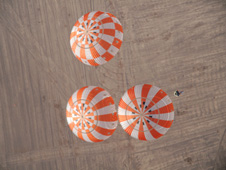Scientists have made a biological discovery in Arctic Ocean waters as unexpected as finding a rainforest in the middle of a desert. A NASA-sponsored expedition named ICESCAPE punched through three-feet of sea ice to find waters richer in microscopic marine plants, essential to all sea life, than any other ocean region on Earth.
The microscopic plants, called phytoplankton, are the base of the marine food chain. Phytoplankton were thought to grow in the Arctic Ocean only after sea ice had retreated for the summer. Scientists now think that the thinning Arctic ice is allowing sunlight to reach the waters under the sea ice, catalyzing the plant blooms where they had never been observed.
The finding reveals a new consequence of the Arctic’s warming climate and provides an important clue to understanding the impacts of a changing climate and environment on the Arctic Ocean and its ecology.
The findings were published in the journal Science.
Link to the NES Virtual Campus home page.


 NASA recently successfully conducted a drop test of the Orion crew vehicle’s entry, descent and landing parachutes high above the Arizona desert in preparation for the vehicle’s orbital flight test, Exploration Flight Test -1, in 2014. Orion will carry astronauts deeper into space than ever before, provide emergency abort capability, sustain the crew during space travel and ensure a safe re-entry and landing.
NASA recently successfully conducted a drop test of the Orion crew vehicle’s entry, descent and landing parachutes high above the Arizona desert in preparation for the vehicle’s orbital flight test, Exploration Flight Test -1, in 2014. Orion will carry astronauts deeper into space than ever before, provide emergency abort capability, sustain the crew during space travel and ensure a safe re-entry and landing.